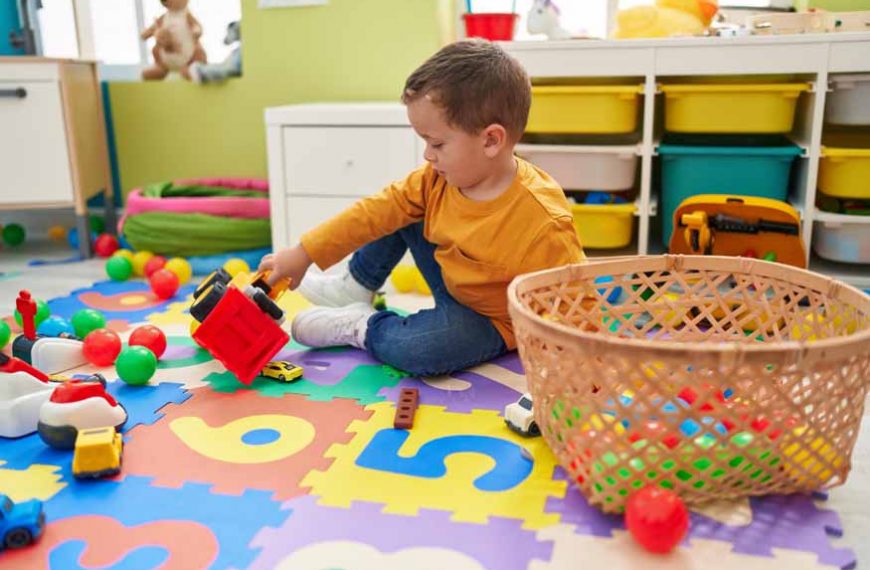As parents, we are ecstatic when our little ones take their first steps, utter their first words or reach developmental milestones. But as our babies grow, they eventually transition into the toddler phase, which comes with its own set of experiences – some challenging, others incredible. One important aspect of this transition is finding the right toddler program to help your babies transition. Let’s explore why toddler transition programs are helpful, what to expect in such programs, the different types of educational programs for toddlers available, and what sets a great program apart from the rest.
Why Toddler Transition Programs Are Helpful
Toddlerhood is a pivotal period in a child’s life. It’s a time of rapid cognitive, emotional and physical development. Toddler learning programs are designed to facilitate this development in a structured and supportive environment. Here’s why they are beneficial for your little ones:
- Smooth Transition: Transitioning from the comfort of home or a daycare setting to a preschool or kindergarten can be daunting for toddlers. Transition programs help ease this process, making it a smoother and less stressful experience for both children and parents.
- Social Development: These programs encourage interaction with peers, fostering important social skills like sharing, taking turns and forming friendships. Toddlers learn to work and play alongside others, setting the foundation for positive social interactions.
- Early Learning: While play remains a crucial component, toddler programs introduce basic educational concepts in a fun and age-appropriate manner. Children engage in activities that stimulate cognitive development, such as counting, recognizing shapes and expanding their vocabulary.
- Routine and Structure: Toddlers thrive on routine and consistency. Transition programs provide a structured environment that helps toddlers understand expectations and develop essential time management skills.
- Independence: Encouraging independence is a key focus of these programs. Children learn to take care of themselves, from simple tasks like washing hands to tidying up their play areas.
What Can One Expect in a Toddler Transition Program
Now that we understand the importance of early childhood education programs for transitioning toddlers, let’s dive into what you can expect when enrolling your child in one:
- Age-Appropriate Activities: Programs are designed with the developmental needs of toddlers in mind. Expect activities like art and craft, storytime, music and movement, and outdoor play.
- Social Interaction: Toddlers learn to interact with their peers through guided play and group activities. Teachers facilitate these interactions, encouraging sharing and cooperation.
- Structured Routine: Programs typically follow a daily schedule that includes snack times, naps and learning activities. This routine helps toddlers feel secure and comfortable in their environment.
- Experienced Staff: Qualified educators or caregivers oversee these programs. They are trained to work with toddlers and understand their unique needs, helping them grow and develop peacefully.
- Parent Involvement: Some programs encourage parental involvement, fostering a sense of community among families. This can include parent-teacher meetings, family events and workshops.
- Preparation for Preschool or Kindergarten: Transition programs often align with the curriculum and routines of local preschools or kindergartens, making the eventual transition smoother for children.
What Makes a Toddler Transition Program Better Than Others
Not all transition programs are created equal. Here are some key factors that distinguish exceptional programs from the rest:
- Qualified and Caring Staff: The quality of the staff is paramount. Look for programs with well-trained teachers who genuinely care about the children’s well-being and development. You will often find staff credentials accessible.
- Low Teacher-to-Child Ratio: A lower teacher-to-child ratio ensures that each child receives adequate attention and support. Good teacher-to-child ratios range between 1:6 and 1:8.
- Safe and Stimulating Environment: The program should provide a safe and stimulating physical environment, both indoors and outdoors, with age-appropriate toys, books and activities.
- Developmentally-Appropriate Curriculum: A well-designed curriculum that balances play and learning is essential. It should align with the developmental needs of toddlers.
- Communication: Look for programs that maintain open and regular communication with parents. This includes sharing updates on your child’s progress and addressing any concerns or questions you may have.
- Positive Reviews and Recommendations: Seek recommendations from other parents and check online reviews to gauge the program’s reputation and the experiences of other families.
Different Types of Toddler Programs
There are various types of toddler learning programs available, catering to different needs and preferences. Here are a few of the most common ones:
- Traditional Preschools: These are often associated with larger preschools or childcare centres. They offer structured programs for toddlers that prepare them for preschool or kindergarten.
- Montessori Programs: Montessori-based programs focus on child-centred learning, encouraging independence and self-directed activities.
- Parent Co-Ops: In parent cooperative programs, parents take an active role in the classroom and share responsibilities with teachers, creating a strong sense of community.
- Language Immersion Programs: These programs immerse toddlers in a second language, promoting bilingualism or multilingualism from a young age.
- Nature-Based Programs: Nature-based programs emphasise outdoor play and learning in natural settings, fostering a strong connection to the environment.
Tips for Finding the Best Toddler Transition Program
Selecting the right toddler transition program for your child can be a daunting task. Here are some tips to help you make an informed decision:
- Start Early: Begin your search well in advance. Many popular programs have waiting lists, so it’s wise to start researching options when your child is around a year old.
- Visit Several Programs: Take the time to visit multiple programs in person. This will allow you to get a feel for the environment, interact with staff and see how children are engaged during a session.
- Ask Questions: Don’t hesitate to ask questions about the curriculum, daily routines and teacher qualifications. Inquire about their approach to discipline and how they handle developmental roadblocks or challenging behaviours.
- Observe Interactions: Watch how teachers interact with the children. Are they warm, patient and nurturing? Do they encourage independence and problem-solving? Are they too loud and overbearing?
- Seek Recommendations: Talk to other parents in your community. Their experiences and recommendations can be invaluable in your decision-making process.
- Consider Your Child’s Needs: Every child is unique. Consider your child’s personality, temperament and special needs, when choosing a program that aligns with their individuality.
- Trust Your Instincts: Ultimately, trust your gut feeling. If a program doesn’t feel like the right fit for your child, keep searching until you find one that does.
Choosing the right educational programs for toddlers who are transitioning is a significant decision for parents and a crucial step in your child’s early development. By understanding why these programs are beneficial, knowing what to expect, recognizing the key qualities of a great program, and considering different program types, you can make an informed choice that sets your child on the path to a successful and fulfilling educational journey.
















